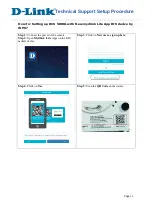
TOBY-R2 series - System integration manual
UBX-16010572 - R10
System description
Page 32 of 151
1.7
Antenna interface
1.7.1
Antenna RF interfaces (ANT1 / ANT2)
TOBY-R2 series modules provide two RF interfaces for connecting the external antennas:
ANT1 represents the primary RF input/output for transmission and reception of RF signals.
ANT1 pin has a nominal characteristic impedance of 50
and must be connected to the primary
Tx / Rx antenna through a 50
transmission line to allow proper RF transmission and reception.
ANT2 represents the secondary RF input for the reception of LTE / 3G RF signals in Down-Link Rx
diversity radio technology supported by TOBY-R2 modules as required feature for LTE Cat 1 UEs.
The ANT2 pin has a nominal characteristic impedance of 50
and must be connected to the
secondary Rx antenna through a 50
transmission line to allow proper RF reception.
1.7.1.1
Antenna RF interfaces requirements
summarize the requirements for the RF interfaces (ANT1 / ANT2). See
for suggestions to properly design antennas circuits compliant with these requirements.
⚠
The antenna circuits affect the RF compliance of the device integrating TOBY-R2 series modules
with applicable required certification schemes (for more details see
section 4
). Compliance is met
by fulfilling the requirements for the antenna RF interfaces (ANT1 / ANT2) summarized in
Item
Requirement
Remark
Impedance
50
nominal characteristic
impedance
The impedance of the antenna RF connection must match the 50
impedance of the ANT1 port.
Frequency
Range
See the TOBY-R2 series data
sheet
The required frequency range of the antenna connected to ANT1 port
depends on the operating bands of the used cellular module and the
used mobile network.
Return Loss
S
11
< -10 dB (VSWR < 2:1)
recommended
S
11
< -6 dB (VSWR < 3:1) acceptable
The Return loss or the S
11
, as the VSWR, refers to the amount of
reflected power, measuring how well the antenna RF connection
matches the 50
characteristic impedance of the ANT1 port.
The impedance of the antenna termination must match as much as
possible the 50
nominal impedance of the ANT1 port over the
operating frequency range, reducing as much as possible the amount
of reflected power.
Efficiency
> -1.5 dB ( > 70% ) recommended
> -3.0 dB ( > 50% ) acceptable
The radiation efficiency is the ratio of the radiated power to the power
delivered to antenna input: the efficiency is a measure of how well an
antenna receives or transmits.
The radiation efficiency of the antenna connected to the ANT1 port
needs to be enough high over the operating frequency range to comply
with the Over-The-Air (OTA) radiated performance requirements, as
Total Radiated Power (TRP) and the Total Isotropic Sensitivity (TIS),
specified by applicable related certification schemes.
Maximum Gain According to radiation exposure
limits
The power gain of an antenna is the radiation efficiency multiplied by
the directivity: the gain describes how much power is transmitted in
the direction of peak radiation to that of an isotropic source.
The maximum gain of the antenna connected to ANT1 port must not
exceed the herein stated value to comply with regulatory agencies
radiation exposure limits.
For additional info see sections
Input Power
> 33 dBm ( > 2 W ) for TOBY-R200
> 24 dBm ( > 0.25 W ) for TOBY-R202
The antenna connected to the ANT1 port must support with adequate
margin the maximum power transmitted by the modules
Table 7: Summary of primary Tx/Rx antenna RF interface (ANT1) requirements
















































